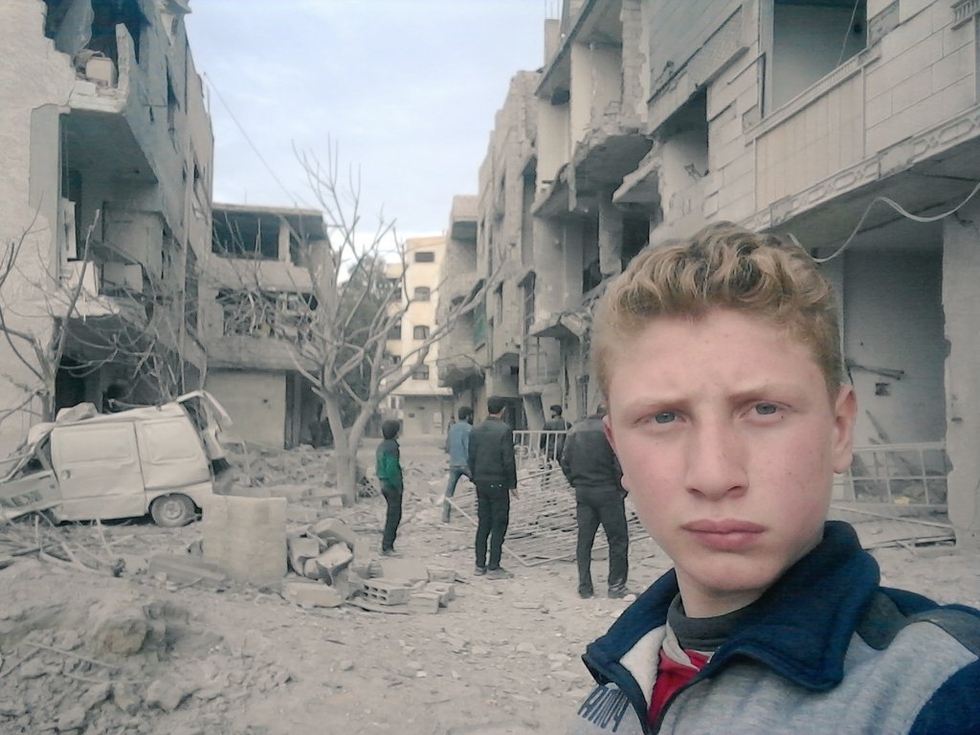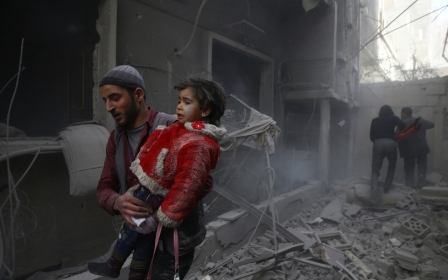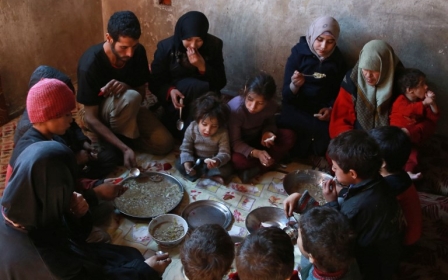Eastern Ghouta: Children tell of life under bombs through social media

As air strikes rained down on Eastern Ghouta last week, hundreds of families hid inside their homes to escape the violence.
But despite the ongoing bombardment, children across the besieged suburb continued to post videos online in a desperate last-ditch attempt to shed light on the humanitarian crisis unfolding in the area.
"Yesterday we were playing together in the underground shelter," posted 15-year-old Muhammad Najem on Twitter last Thursday.
"Today my friend and his family were killed by a fighter plane that put his life to death.
"He and his family were unable to stay under the rubble of the four-storey building near my house a few hours ago."
More than 200 people were killed last week following six consecutive days of air strikes on the rebel-held enclave by Russian and Syrian government warplanes.
The UN confirmed on Saturday that last week's death toll in Eastern Ghouta reached 277 with 812 civilians injured. At least 100 children were among the dead, according to the UK-based Syrian Observatory for Human Rights.
Najem is one of the few Syrian children who took to social media to document the harsh realities of living in Eastern Ghouta.
From speaking out on how the government siege has forced families to have only one meal a day, to living with constant air strikes and government shelling forcing schools across the rebel enclave to close down.
The videos coming out of neighbourhoods by children, aided by family members and opposition activists, are from across the rebel-held area and offer a rare glimpse to the realities of living in a Damascus suburb besieged for the last four years.
Shams Alkhateeb, the mother of 10-year-old Noor and eight-year-old Alaa, has been posting videos of the daily life of her children inside Eastern Ghouta since October.
Speaking from the besieged area, Alkhateeb told Middle East Eye that the continued bombardment of areas near her home and death of friends and family had given her children no choice but to start posting videos.
"Children inside the besieged areas are facing malnutrition, lack of water, and electricity. We deserve to live and continue in this life," said Alkhateeb.
"That's why we decided to open a Twitter account to show the world what is happening inside Eastern Ghouta. Nothing in the world can stop us posting, and we hope to document our suffering on Twitter."
Since the siege began in Eastern Ghouta, opposition activists had made previous attempts to tell their stories online. More and more accounts started to emerge after seven-year-old Bana Al-Abed and her mother took to Twitter to post about living under siege in East Aleppo.
Late last year, the United Nations reported that nearly 12 percent of children under five in Eastern Ghouta suffered from malnutrition - the highest rate recorded since the start of the war.
Eastern Ghouta falls into one of four "de-escalation zones" set up under a deal between government allies Russia and Iran, and rebel backer Turkey, agreed early last year.
But while the zone initially brought some calm, violence has increased steadily in recent weeks, with government air strikes and artillery fire killing hundreds in recent days, according to SOHR.
Aid access has also improved little since the zone was implemented, though the UN has been able to deliver assistance sporadically.
New MEE newsletter: Jerusalem Dispatch
Sign up to get the latest insights and analysis on Israel-Palestine, alongside Turkey Unpacked and other MEE newsletters
Middle East Eye delivers independent and unrivalled coverage and analysis of the Middle East, North Africa and beyond. To learn more about republishing this content and the associated fees, please fill out this form. More about MEE can be found here.




